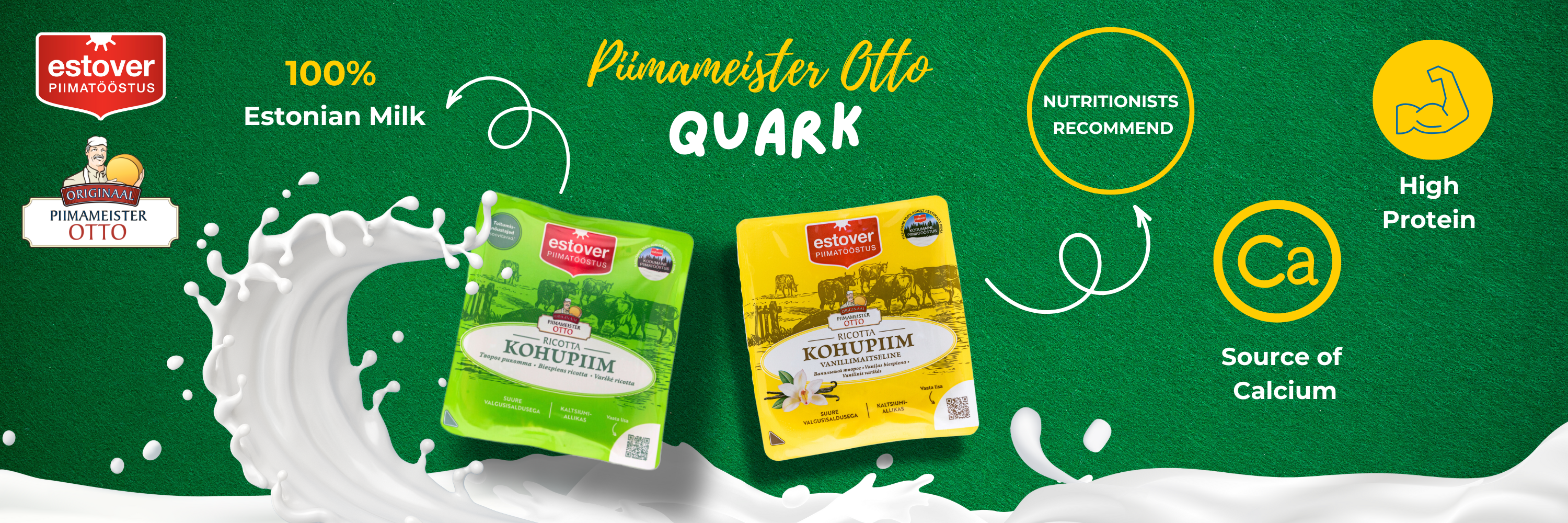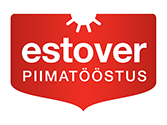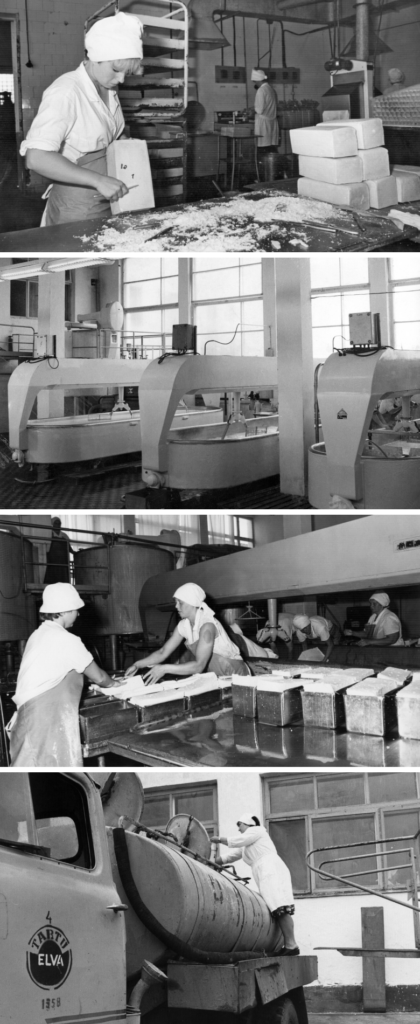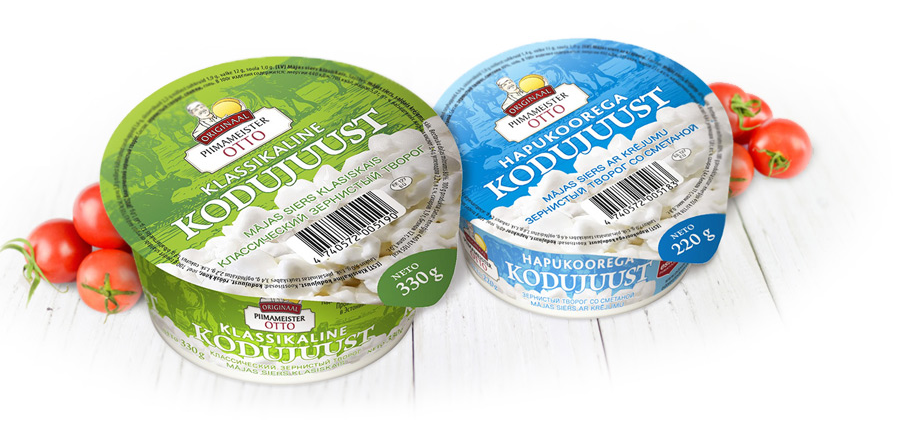The history of the cheese goes back thousands of years and has been known for 3500-4000 years BC in Sumer and Babylonia. Cheese was enjoyed by contemporaries of Homer and was a prized food in ancient Rome.
No one really knows who made the first cheese. According to an ancient legend, it was made accidentally by an Arabian merchant who put his supply of milk into a pouch, made from a sheep’s stomach, as he set out on a day’s journey across the desert. The rennet in the lining of the pouch, combined with the heat of the sun, caused the milk to separate into curd and whey. That night he found that the whey satisfied his thirst, and the cheese (curd) had a delightful flavor, which satisfied his hunger.
The most common type of natural cheese in Estonia is Dutch-type cheese. The famous Dutch cheeses – Gouda and Edam, inspire it. Both are typical semi-hard cheeses with smooth texture, rich flavor and very high nutritional value. The second most popular natural cheese is the semi-hard, Tilsit type cheeses of the Svecia cheese class, which are widespread in the Nordic countries. It includes Russian cheese in Estonia.
Cheese and the craft of making cheese
Cheese is a high-protein dairy product with high calcium, low moisture content and relatively long shelf life.
The most important ingredient in cheese making is the quality of milk. Whole milk, partly skimmed milk, skimmed milk, buttermilk, whey and any combination of these raw materials are used. Most of the cheeses on our store counters are made from pasteurized milk, but there can also be found delicacies made from unpasteurised raw milk.
Any milk can be used to make the cheese. Most cheeses sold in Estonia are made from cow’s milk, less often from sheep’s or goat’s milk, some varieties also from buffalo’s milk (eg mozzarella di buffala). Cheeses made from milk of camel, horse, reindeer or yak are exotic, but they are rather rare on the Estonian market, but definitely worth a try.
ABC of cheese making
It takes about 10 kilos of very good milk to make 1 kg of natural semi-hard cheese with a very good texture.
The secret of making cheese is the ability to curdle milk solids into cheese mass as efficiently as possible. Cheese production consists four main stages:
1. Heat treatment of milk – separation of cream and skimmed milk, pasteurization and normalization to achieve the required fat percentage.
2. Coagulation of cheese milk – The milk protein solidifies when yeast and rennet is added.
3. Whey extraction – cutting and reheating of the cheese blade. Drainage, splitting into cheese molds, pressing and salting in a salt bath.
4. Packing and maturing of the cheese in storage.
Varieties of Cheese
The cheese world is wide and continues to be suitable for all tastes. There are salty and sweeter cheeses. There is soft cheese with a high moisture content, but also very hard cheese with a low moisture content. There are cheeses with very different holes – there is a nice “lace” hole in Mice and Russian cheese and with a few smaller holes, we have Estonian and Dutch Cheese. There are hazelnut-sized holes in a sweet-flavored Emmental and without the holes, there is a soft Cheddar and a very hard Parmigiano Reggiano.
The classification of cheeses
Cheeses are normally classified according to firmness, which varies with the degree of moisture. The moisture content of firm cheeses may be as low as 30%, while that of soft or fresh cheeses may be as high as 80%. The most common designations include fresh (or unripened) cheeses, soft ripened cheeses, firm or semi-firm cheeses, blue-veined, processed and goat’s-milk cheeses.
Fresh or unripened cheeses are coagulated under the action of lactic acid fermentation in the milk instead of adding rennet. While they are drained after formation of the curd, they are neither ripened nor fermented. This category includes cottage cheese, ricotta, mascarpone, cream cheese and quark. Fresh cheeses are mainly used in baking and desserts, plain or flavored with vegetables, fruits, herbs or spices.
In the case of ripened cheeses, the perfect taste is achieved only after a certain period of time. These cheeses only get better as they mature.
Some excellent reasons to eat more cheese
Cheese is delicious and healthy. Sometimes you just want to grab a few slices from the refrigerator and eat them right away. These few slices cover half of your body’s daily calcium requirements, plus plenty of other useful minerals and vitamins.
In addition of being delicious, cheese has a number of useful qualities:
1. Cheese is a source of protein and essential amino acids that are easily assimilated by the body.
2. Cheese is rich in vitamins A, D, and B, and with just a few slices of cheese, we get a significant amount of our daily needs for these vitamins.
3. Cheese is a source of phosphorus and calcium, and for those who are afraid of bone thinning, cheese is a great food – 2-3 slices of cheese provides about 50% of an adult’s daily calcium requirement.
4. Cheese, in moderation, can help you get these necessary fats into your diet. Try choosing aged cheeses, like parmesan, and using it as a garnish to salads. The fats in the cheese will help keep you full and help your body absorb the vitamins in your vegetables.
5. Cheese is also suitable for people who are sensitive to lactose because during the ripening process, milk sugar is broken down into lactose into well-absorbed components. The cheese is lactose-free.
6. Cheese is good for teeth! Eating cheese affects the build-up of calcium in the teeth, which in turn helps protect against caries.
7. Your sleep is more beautiful if you eat one piece of cheese before you fall asleep!
Small trick: It is much easier to grate the cheese if you store it in the freezer for half an hour in advance.
What to drink with a cheese board
Beer is the perfect companion for cheese. Especially when you have chosen more spicy and piquant varieties of cheese.
Combining wine and cheese requires knowledge and skills to find the best cheese and the right wine. To keep the wine and cheese together in harmony, follow these simple rules:
1. Cheese with a mild taste is a good complement to light dry white wine.
2. With more acidic white wine, such as Sauvignon Blanb, Grüner Velrliner or Prosecco, prefer raw cheeses.
3. Powerful red wine forms the perfect pair with spicier cheeses
4. Hard cheeses fit well with richer wines (eg Barolo, Barbaresco, Chianti riserva, etc.)
5. White Brie and Camembert cheeses are great with Bordeaux, younger Chianti or Old World Merlot wines.
6. If it is difficult to remember this long story, it is easiest to choose wine and cheese from one area.

















